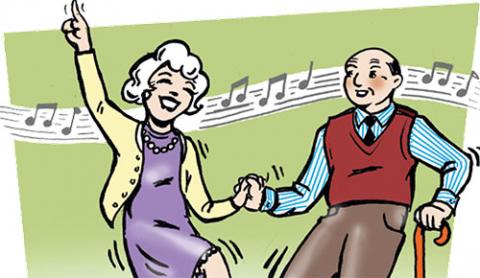Cardiovascular disease (CVD) includes conditions such as angina, heart attack and stroke. If you have CVD, it is possible to improve your health and quality of life. This summary explains how physiotherapy can help.
On this page:

What is cardiovascular disease (CVD)?
CVD means all the diseases of the heart and circulation. Fatty deposits in the arteries can cause a clot to form. This clot may cut off the blood supply to the heart (resulting in a heart attack) or brain (leading to a stroke).
You may be able to reduce your chances of developing CVD by making some lifestyle changes, such as taking regular exercise and not smoking.
How can physiotherapy help cardiovascular disease?
Cardiac rehabilitation programmes are very effective. They can improve your health and quality of life and reduce the length of hospital stays as well as the number of re-admissions to hospital. Physiotherapists are a vital part of the team of health professionals that run these programmes.
Cardiac rehab can help you get back on your feet both physically and emotionally. It includes exercise, education and support, from when you are in hospital to when you return to your daily life. Cardiac rehab can also show you how to change your habits to improve your health and, if appropriate, help you with returning to work.
Physios are the third largest health profession after doctors and nurses. They work in the NHS, in private practice, for charities and in the work-place, through occupational health schemes.
What can I expect from physiotherapy?
After a heart attack, everyone should be given advice about and offered a cardiac rehabilitation programme with an exercise component.
A cardiac rehabilitation programme includes exercise sessions, information about health and lifestyle changes and how to cope with stress. This helps to slow down or stop heart disease and to reduce the risk of a heart attack or stroke in the future.
What will happen when I see a physiotherapist?
Your physio will make a detailed assessment and will ask you to discuss what happened to you and your recovery. Your physio will work with you to identify and prioritise what you want to achieve. They will also give you advice and support to make lifestyle changes, such as suitable exercise.
Everything you tell the physio will be completely confidential.
So that your physio can have a good look at how you move, they may need you to remove some clothes. They may also want to give you a simple exercise test, to find out how fit you are. Therefore, it’s a good idea to dress comfortably and wear suitable underwear.
Following your assessment, you may be offered a cardiac rehab class or you may continue to see your physio one-to-one. A cardiac rehab class would include education and exercise sessions, as well as emotional support for those who need it.
How can I help myself?
If you have CVD, you can still improve your heart health to reduce the risk of another heart attack or stroke and to improve your quality of life. If you smoke, stop.
It’s a good idea to have your blood pressure checked regularly and, if you have high blood cholesterol level, take steps to reduce it. Take regular exercise and eat a healthy diet to keep your weight under control.

Who to ask for help
Your hospital team or GP will be able to advise you.
Top tips for a healthy heart
- Go for a walk every day. Start slowly and build up gradually. Going with a friend can make it more enjoyable and help you to keep the habit up
- Get professional advice before you begin structured exercise
- If you are struggling to stop smoking, your GP can help
- Extra weight puts strain on the heart, so lose weight if you need to
- Eat a balanced diet with plenty of fruit, veg and oily fish
- Reduce the amount of alcohol, salt and animal fats you have
- Take your medication as prescribed
Guidance and evidence for physiotherapy
- Clinical evidence for physio and cardiac rehab: Physiotherapy Works
Links and further information
- NHS Choices: Patient information on heart disease
- British Heart Foundation
Disclaimer
The content on this page is provided for general information purposes only and is not meant to replace a physiotherapy or medical consultation. The CSP is not responsible for the content of any external sites, nor should selection be seen as an endorsement of them.

